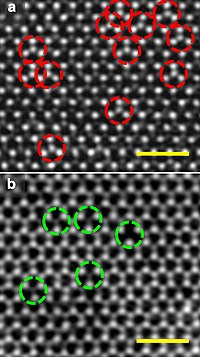Crystallographic defect

Imagine you have a bunch of toy blocks that you want to stack together perfectly to make a tower. But sometimes, while stacking the blocks, you accidentally put one in the wrong place, and it doesn't fit perfectly with the others. This is kind of like a crystallographic defect in a crystal.
A crystallographic defect is when something goes wrong in the way a crystal is formed, and it doesn't look perfect like it should. This could happen in a few different ways:
- A crystal might have missing or extra atoms in certain places. This could cause the crystal to be weaker or more brittle than it should be.
- Sometimes, atoms might be in slightly the wrong place in the crystal lattice. This could cause the crystal to have slightly different properties than it should.
- There could be impurities in the crystal, like tiny bits of some other substance mixed in. This could change the color or other properties of the crystal.
Just like a tower made of toy blocks with a mistake in it might fall over more easily, a crystal with a defect might not be as strong or might have different properties than it normally would. But sometimes, these defects can also be useful -- for example, they might help a material conduct electricity better, or make it more scratch-resistant.
A crystallographic defect is when something goes wrong in the way a crystal is formed, and it doesn't look perfect like it should. This could happen in a few different ways:
- A crystal might have missing or extra atoms in certain places. This could cause the crystal to be weaker or more brittle than it should be.
- Sometimes, atoms might be in slightly the wrong place in the crystal lattice. This could cause the crystal to have slightly different properties than it should.
- There could be impurities in the crystal, like tiny bits of some other substance mixed in. This could change the color or other properties of the crystal.
Just like a tower made of toy blocks with a mistake in it might fall over more easily, a crystal with a defect might not be as strong or might have different properties than it normally would. But sometimes, these defects can also be useful -- for example, they might help a material conduct electricity better, or make it more scratch-resistant.
Related topics others have asked about:
